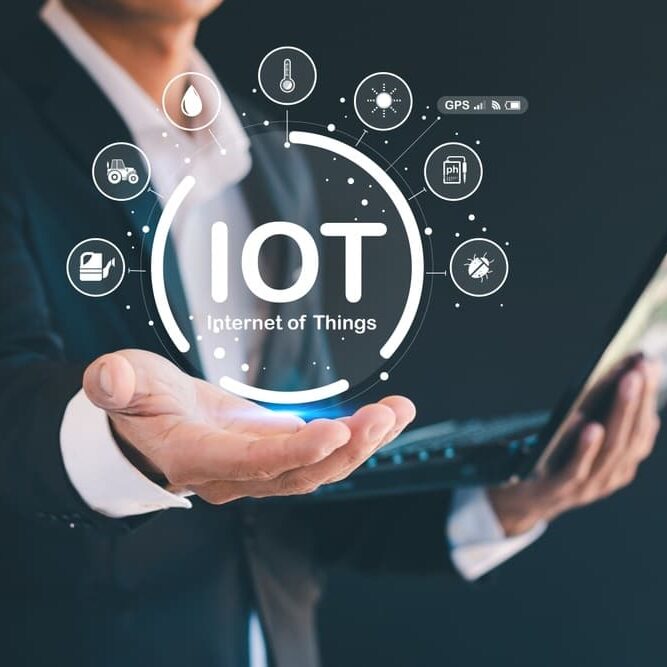Introduction
In today’s fast-paced business landscape, small enterprises are increasingly turning to technology to enhance their operations and stay competitive. One of the most significant technological advancements in recent years is the Internet of Things (IoT)—a network of interconnected devices that collect and exchange data.
IoT isn’t just a buzzword; it’s a powerful tool that small businesses can leverage to streamline processes, improve customer experiences, and drive innovation. By integrating IoT solutions, small enterprises can unlock a world of practical applications and benefits that lead to enhanced efficiency and cost savings. In this blog post, we’ll explore the integration of IoT in small enterprises, including its practical applications and the myriad benefits it offers.
Understanding IoT and Its Significance for Small Enterprises
At its core, the Internet of Things refers to the connection of everyday objects to the internet, enabling them to send and receive data. The components of IoT include:
- Sensors: Devices that collect data from the environment (e.g., temperature, humidity, motion).
- Connectivity: The means through which devices communicate, such as Wi-Fi, Bluetooth, or cellular networks.
- Data Processing: Analyzing the collected data to derive insights and drive actions.
For small enterprises, embracing IoT is not just about keeping up with technology trends; it’s about fostering innovation and enhancing competitiveness. By utilizing IoT solutions, small businesses can:
- Improve operational efficiency.
- Enhance customer engagement.
- Make data-driven decisions.
The significance of IoT lies in its capacity to drive transformational change, enabling small enterprises to operate smarter and more effectively.

Benefits of Integrating IoT in Small Enterprises
Embracing IoT technology yields numerous benefits for small businesses:
a. Increased Efficiency
By automating routine tasks and providing real-time data, IoT allows small enterprises to streamline operations.
- Example: A small logistics company uses IoT fleet tracking to optimize delivery routes, resulting in faster delivery times and reduced operational costs.
b. Cost Savings
Integrating IoT leads to significant cost savings through increased efficiency and better resource management.
- Example: Companies that implement smart meters can monitor and adjust energy consumption, leading to substantial savings on utility bills.
c. Data-Driven Decisions
IoT enables small businesses to collect valuable data, facilitating informed decision-making.
- Benefit: Access to real-time data allows businesses to respond quickly to market changes and customer needs.
d. Competitive Advantage
Adopting IoT technologies can help small enterprises differentiate themselves in a crowded market.
- Example: Retailers utilizing IoT for personalized shopping experiences can capture customer attention and foster brand loyalty.
Challenges and Considerations for Small Enterprises
While the benefits of integrating IoT are compelling, small enterprises may face challenges in adoption, including:
- Cost of Implementation: Initial investments in IoT technology and infrastructure can be significant.
- Complexity of Technology: Selecting the right IoT solutions and understanding how to implement them can be overwhelming.
- Security Concerns: Increased connectivity raises concerns about data security and privacy.
Recommendations:
- Perform a Needs Assessment: Determine what specific challenges you aim to solve with IoT before investing.
- Start Small: Implement IoT solutions gradually, testing them in one area of the business before broader adoption.
- Partner with Experts: Consider collaborating with IoT service providers or consultants who can guide your integration process.

Future Trends and Innovations in IoT for Small Enterprises
As technology continues to evolve, the future of IoT for small enterprises looks promising:
- Predictions: Increased connectivity, along with advancements in artificial intelligence and machine learning, will enable more sophisticated IoT applications.
- Emerging Technologies:
- AI Integration: Combining IoT with AI will enhance data analysis, allowing businesses to glean deeper insights from collected data.
- Smart Environments: The concept of smart offices and smart factories will gain traction among small enterprises looking to modernize operations.
Preparing for the Future:
- Stay informed about emerging IoT trends by following industry news.
- Invest in training and education to empower your teams to leverage the latest technologies effectively.
Conclusion
The integration of IoT technology in small enterprises holds the potential to revolutionize operations, enhance customer engagement, and drive innovation. By adopting IoT solutions, business owners can unlock a host of practical applications that lead to greater efficiency and cost savings.
As you consider the possibilities of IoT for your small business, remember to evaluate your needs, start small, and seek expertise when necessary. The future of IoT is bright, and its benefits are within your reach. Embrace this transformative technology and position your small enterprise for success in an increasingly connected world.
